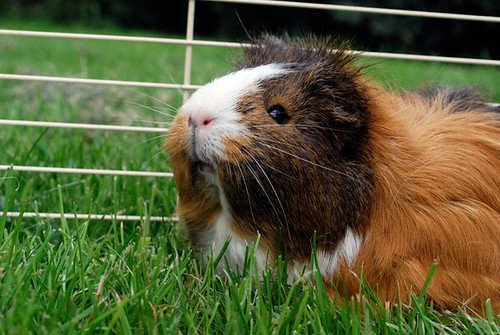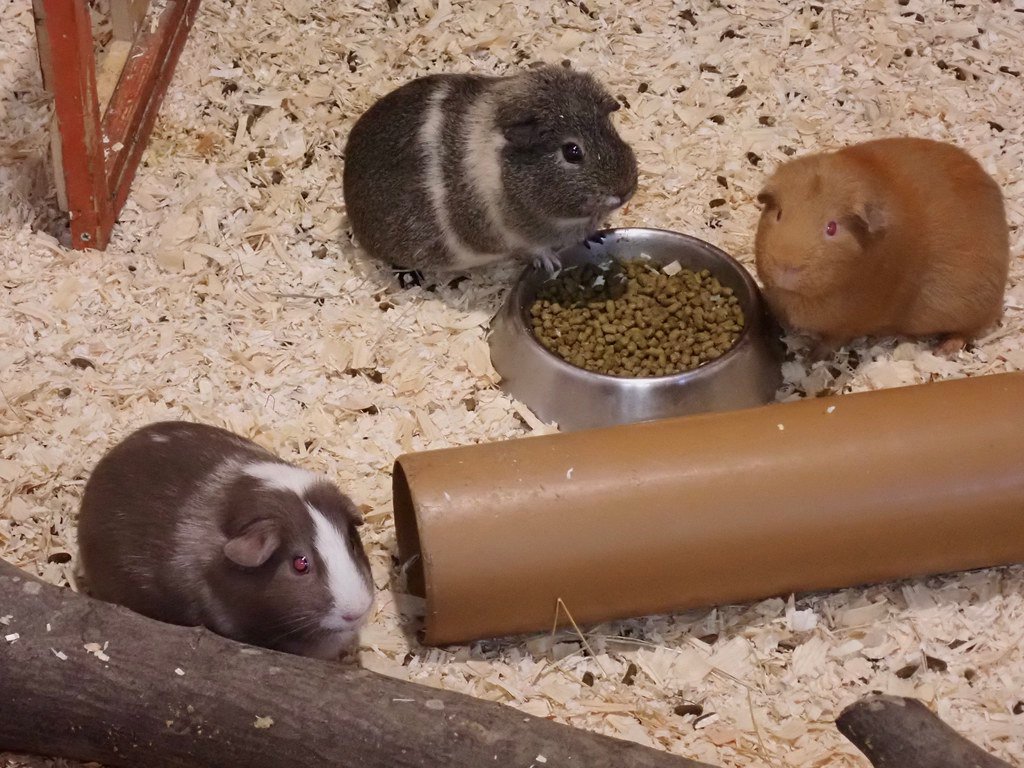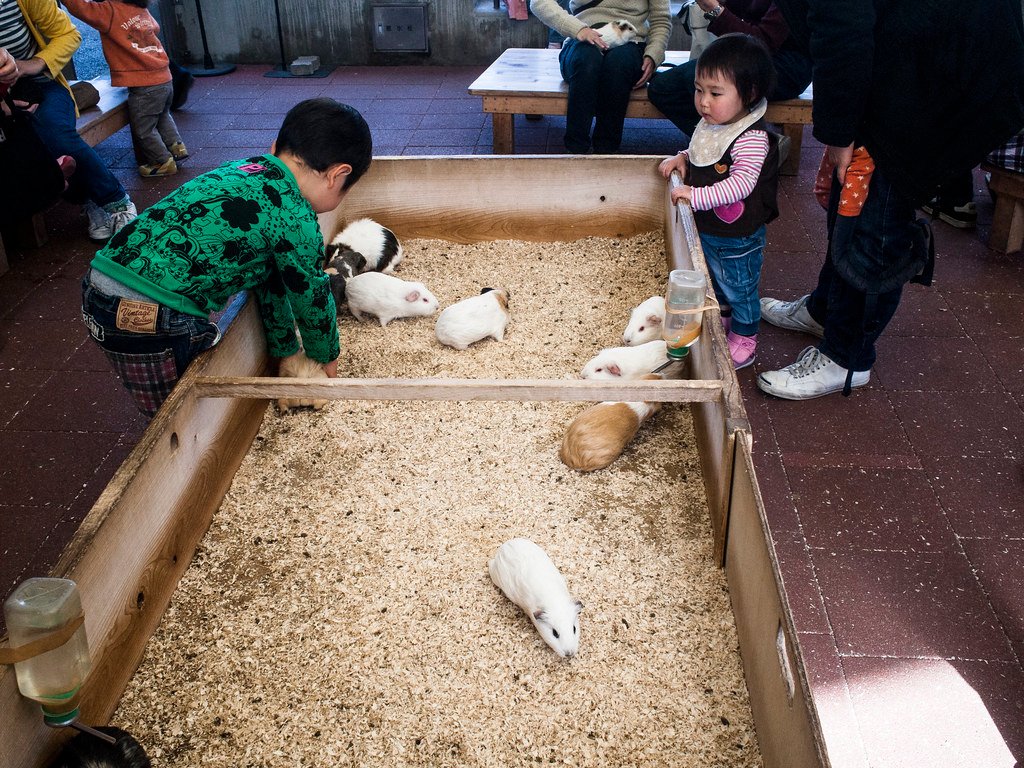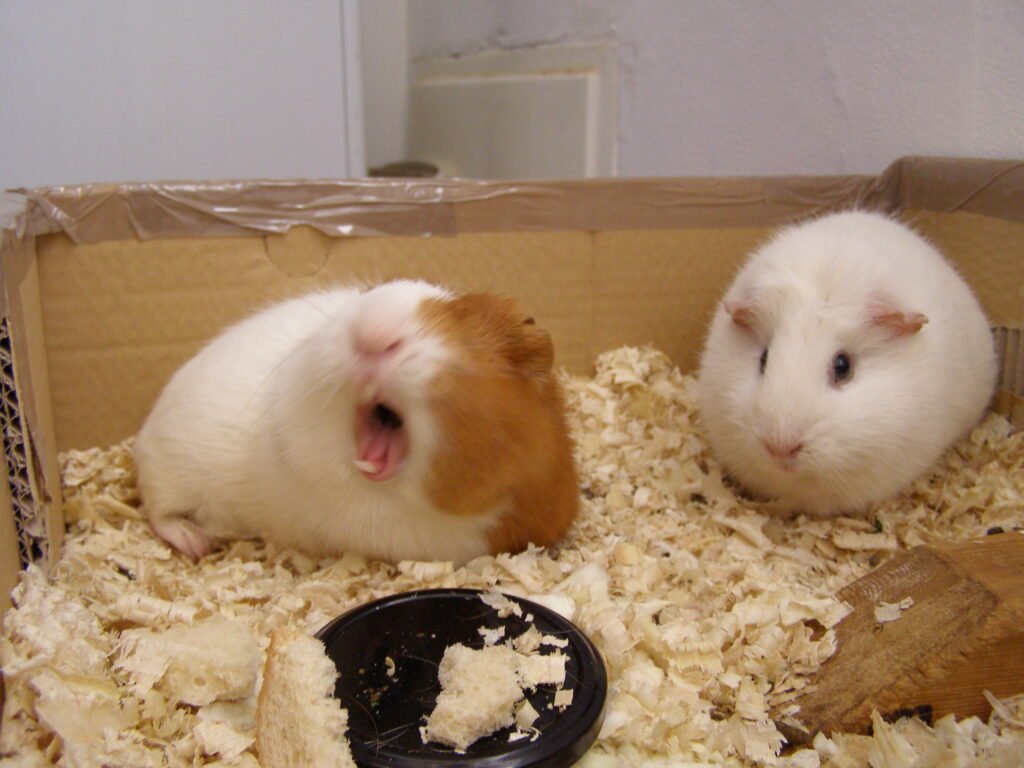Have you ever wondered why guinea pigs seem to chatter from the moment they enter the world? These adorable little creatures are among the most vocal animals on Earth, and their ability to communicate starts incredibly early in their lives. Unlike many mammals that are born helpless and silent, guinea pigs emerge into the world with their eyes open, fur intact, and an impressive vocabulary of squeaks, whistles, and purrs already at their disposal.
The Miracle of Precocial Birth

Guinea pigs are what scientists call “precocial” animals, meaning they’re born remarkably well-developed compared to most mammals. While puppies and kittens are born blind, deaf, and completely dependent on their mothers, guinea pig pups arrive with their sensory systems fully operational. Their eyes are wide open, their ears are perfectly functional, and their vocal cords are ready for action.
This advanced development happens because guinea pig mothers have an unusually long gestation period of about 68 days. During this extended time in the womb, the babies develop far beyond what you’d expect from such small creatures. They’re essentially born as miniature adults, complete with the ability to run, eat solid food, and yes – communicate through a sophisticated system of vocalizations.
The First Sounds of Life

Within moments of birth, guinea pig babies begin making contact calls to their mothers. These aren’t random noises but purposeful communications that serve critical survival functions. The newborns instinctively know how to produce different sounds for different needs – hunger calls, distress signals, and comfort sounds.
Research has shown that guinea pig pups can produce up to eight distinct vocalizations within their first few hours of life. This immediate vocal ability is crucial for their survival in the wild, where staying connected to the mother and alerting her to danger could mean the difference between life and death. It’s like they’re born with a built-in communication system that would make any smartphone jealous.
Why Early Communication Matters

The ability to vocalize immediately after birth serves several vital purposes for guinea pig survival. In their natural habitat in South America, guinea pigs live in complex social groups where communication is essential for coordinating activities like foraging and predator avoidance. A silent baby would be a vulnerable baby, unable to call for help or signal its location to protective adults.
Moreover, guinea pig mothers are incredibly responsive to their babies’ vocalizations. They can distinguish between different types of calls and respond appropriately – rushing to provide food when they hear hunger calls or offering comfort when they detect distress signals. This immediate parent-child communication bond is so strong that mothers have been observed responding to recorded baby calls even when their own offspring aren’t present.
The Guinea Pig Sound Dictionary

Guinea pigs possess one of the most diverse vocal repertoires in the animal kingdom, with over 20 different sounds documented by researchers. Each sound has a specific meaning and context, creating what’s essentially a complex language system. The famous “wheek” sound that many pet owners recognize is actually a food-begging call that guinea pigs use when they hear the rustle of a food bag.
Then there’s the adorable “popcorning” behavior, where guinea pigs literally jump and twist in the air while making excited chittering sounds. This joyful expression typically happens when they’re particularly happy or excited about something. The purring sound, similar to a cat’s purr but with a different vibration pattern, indicates contentment and relaxation.
Social Structures and Vocal Hierarchies

Guinea pig societies are remarkably complex, with established hierarchies and social rules that are maintained through vocal communication. Dominant guinea pigs use specific rumbling sounds to assert their authority, while subordinate animals respond with submissive squeaks. These vocal exchanges help maintain social order without the need for physical confrontation.
In groups, guinea pigs engage in what researchers call “conversational exchanges” – back-and-forth vocalizations that seem to convey information about food sources, territory boundaries, and social relationships. It’s like listening to a neighborhood gossip session, but with more squeaking and less judgment.
The Science Behind Their Vocal Abilities

The guinea pig’s vocal system is anatomically fascinating and perfectly designed for their communication needs. Their larynx is proportionally larger than that of most rodents, allowing for greater sound production and variety. The positioning of their vocal cords and the shape of their throat cavity enable them to produce sounds across a wide frequency range.
Scientists have discovered that guinea pigs can produce both audible sounds that humans can hear and ultrasonic calls that are beyond our hearing range. These ultrasonic communications are particularly important for mother-infant bonding and may carry information that we’re only beginning to understand. It’s like they have a secret frequency that only they can access.
Environmental Influences on Guinea Pig Communication

The environment plays a crucial role in shaping guinea pig vocalizations. Wild guinea pigs living in the Andes mountains have developed different call patterns compared to their cousins in grassland areas. These regional “dialects” help guinea pigs identify members of their own group and avoid potential conflicts with strangers.
Domesticated guinea pigs have also developed unique vocalizations that their wild ancestors never used. The demanding “wheek” call that pet guinea pigs use when they hear their owners approach is actually a learned behavior that has evolved through thousands of years of human interaction. They’ve essentially trained us to respond to their calls, making them incredibly effective at getting what they want.
Memory and Learning in Guinea Pig Communication

Guinea pigs possess remarkable memory capabilities when it comes to vocal learning and recognition. They can remember and respond to specific human voices, often becoming more excited when their favorite person approaches. Some guinea pigs have been observed learning to mimic certain human sounds, though this ability varies greatly between individuals.
Research has shown that guinea pigs can also learn to associate specific sounds with different outcomes. They quickly figure out that the sound of a refrigerator door opening might mean treats are coming, while the sound of a vacuum cleaner means it’s time to hide. This learning ability extends to their interactions with other guinea pigs, where they constantly refine their communication skills based on the responses they receive.
The Role of Scent in Guinea Pig Communication

While guinea pigs are incredibly vocal, they also rely heavily on scent marking to communicate with each other. They have specialized scent glands that produce unique chemical signatures, and they use these to mark territory, identify individuals, and even indicate reproductive status. This dual communication system – vocal and olfactory – creates a rich information network that helps coordinate group activities.
Interestingly, guinea pigs often combine vocalizations with scent marking behaviors. They might make specific sounds while rubbing their scent glands on objects, creating a multi-sensory message that conveys more information than either method alone. It’s like sending a text message with both words and emojis – the combination provides richer meaning than either element by itself.
Guinea Pig Intelligence and Problem-Solving

The sophisticated communication abilities of guinea pigs hint at their remarkable intelligence. These animals can solve complex problems, navigate mazes, and even learn to respond to their names. Their ability to process and respond to various vocal cues demonstrates cognitive abilities that rival those of many larger mammals.
Guinea pigs have been observed using tactical deception in their communications – making false alarm calls to distract other guinea pigs from food sources, or using specific vocalizations to manipulate social situations to their advantage. This level of strategic thinking suggests that their communication system is not just instinctual but involves conscious decision-making processes.
The Evolution of Guinea Pig Vocalizations

The evolutionary history of guinea pig communication is a fascinating story of adaptation and survival. Their ancestors developed these vocal abilities over millions of years as they faced various environmental challenges in South America. The ability to communicate effectively gave certain populations advantages in finding food, avoiding predators, and coordinating group movements.
Genetic studies have revealed that the genes responsible for guinea pig vocal development are similar to those found in other highly vocal mammals, including humans. This suggests that the basic mechanisms for complex vocal communication evolved early in mammalian history and have been refined differently in various species based on their specific needs and environments.
Guinea Pigs as Emotional Communicators

One of the most remarkable aspects of guinea pig communication is their ability to convey emotional states through vocalizations. They have distinct sounds for happiness, fear, excitement, loneliness, and even grief. When a guinea pig loses a companion, they often make specific mourning calls that can continue for days or even weeks.
These emotional vocalizations serve important social functions within guinea pig communities. Happy sounds encourage group cohesion and play behaviors, while distress calls mobilize the group to provide support or flee from danger. The ability to share emotional states through sound creates stronger social bonds and improves group survival rates.
Health and Communication in Guinea Pigs

Guinea pig vocalizations can also provide valuable insights into their health and well-being. Changes in vocal patterns often indicate illness or discomfort before other symptoms become apparent. A guinea pig that suddenly becomes quiet or changes its normal vocal patterns might be experiencing pain or illness.
Veterinarians and experienced guinea pig owners learn to recognize these subtle changes in vocal behavior as early warning signs of health problems. This makes the guinea pig’s vocal nature not just a charming characteristic but also a practical tool for monitoring their welfare and ensuring they receive appropriate care when needed.
The Future of Guinea Pig Communication Research

Modern technology is opening new frontiers in guinea pig communication research. Scientists are using advanced recording equipment to capture and analyze the full range of guinea pig vocalizations, including those in the ultrasonic range that humans cannot hear. Computer analysis is revealing patterns and structures in guinea pig “conversations” that were previously impossible to detect.
Researchers are also investigating whether guinea pigs can learn to communicate with humans through technology. Some studies are exploring whether guinea pigs can learn to use simple computer interfaces or respond to electronic signals, potentially opening new avenues for human-guinea pig interaction and care.
Cultural Impact and Human Fascination

The vocal nature of guinea pigs has made them beloved pets and cultural icons around the world. Their expressive communications have inspired countless videos, memes, and social media posts, helping to spread awareness about their intelligence and emotional complexity. Many people are drawn to guinea pigs specifically because of their vocal and interactive nature.
In some cultures, guinea pigs are considered symbols of good communication and social harmony. Their ability to maintain peaceful group dynamics through vocal interaction has made them models for human social behavior in certain contexts. The study of guinea pig communication has even influenced theories about human language development and social interaction.
Comparing Guinea Pig Communication to Other Species

When compared to other small mammals, guinea pigs stand out as exceptional communicators. While mice and rats primarily use ultrasonic calls that humans cannot hear, guinea pigs communicate across a much broader frequency range. Their vocal repertoire is more diverse than that of rabbits, hamsters, or most other common pet rodents.
The complexity of guinea pig communication is more comparable to that of larger mammals like dolphins or primates than to other rodents. This unexpected sophistication in such small animals has challenged scientists’ assumptions about the relationship between brain size and communication abilities. Guinea pigs prove that effective communication is not just about having a large brain but about having the right neural structures and evolutionary pressures.
Conservation and Wild Guinea Pig Populations

Understanding guinea pig communication is crucial for conservation efforts aimed at protecting wild populations. Many species of wild guinea pigs are threatened by habitat loss and human encroachment. Their complex social structures and communication systems make them particularly vulnerable to environmental disruption.
Conservation programs are now incorporating knowledge about guinea pig vocalizations into their protection strategies. By understanding how these animals communicate and coordinate their activities, conservationists can better design protected areas and management plans that support healthy guinea pig populations. The vocal abilities that make guinea pigs such appealing pets also make them important indicators of ecosystem health in their native habitats.
The remarkable world of guinea pig communication reveals these small animals to be far more sophisticated than most people realize. From their ability to vocalize immediately after birth to their complex social interactions and emotional expressions, guinea pigs demonstrate that size doesn’t determine the richness of an animal’s inner life. Their chattering, squeaking, and purring aren’t just cute sounds – they’re evidence of a vibrant intelligence that has evolved over millions of years to help these creatures thrive in their social world. Next time you hear a guinea pig’s distinctive call, remember that you’re listening to one of nature’s most accomplished communicators expressing themselves in their own remarkable language.




